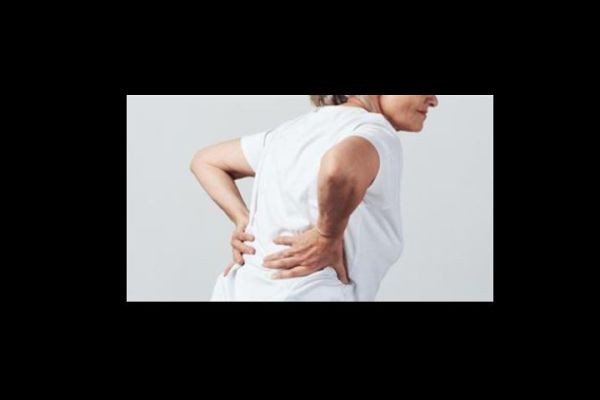by - L. Richardson
Lurking beneath the surface of modern life, a silent menace infiltrates our bodies - chemicals in microplastics, particularly flame retardants like PBDEs. These ubiquitous toxins seep into our environment, homes, and even sweat, posing grave risks of chemical exposure from microplastics. Once inside, they wreak havoc, disrupting delicate biological systems through harmful chemical bioaccumulation and toxins in human tissues.
From textiles to electronics, seemingly innocuous everyday products harbor the dangers of chemicals in microplastics and environmental pollution from microplastics. Disturbingly, these persistent pollutants can lead to endocrine disruption by synthetic chemicals, neurotoxicity from chemical contaminants, and carcinogenic risks of industrial chemicals - a scathing critique of regulatory stances on toxic chemicals that have made this crisis escalate unchecked. The adverse health effects of flame retardants used to prevent fires now threaten to ignite a proverbial blaze ravaging our bodies.
What are PBDEs?
Polybrominated Diphenyl Ethers (PBDEs): The Fiery Foes
Polybrominated diphenyl ethers (PBDEs) are a class of synthetic chemicals that have been widely used as flame retardants in various consumer products for over three decades. These insidious compounds were designed to reduce the risk of fires by preventing materials from quickly catching fire or burning when exposed to high heat or open flames.
PBDEs have found their way into a staggering array of everyday items, including:
- Mattresses and upholstered furniture
- Foam carpet pads and draperies
- Television sets, computers, and stereos
- Cable insulation and adhesives
- Textile coatings
The Persistent Pollutants
Despite their intended purpose of enhancing fire safety, PBDEs are persistent environmental pollutants. These chemicals can accumulate in the environment and the food chain, ultimately making their way into human bodies through various exposure pathways [2].
PBDEs have been detected in human blood, breast milk, and body fat, raising grave concerns about their potential health impacts. These chemicals are a stark reminder that the substances meant to prevent fires may ignite a proverbial blaze within our bodies, disrupting delicate biological systems and posing risks of chemical exposure from microplastics.
Product Category / PBDE Usage
Mattresses / Foam
Furniture / Upholstery
Electronics / Casings
Textiles / Coatings
The widespread use of PBDEs in consumer goods has led to their ubiquitous presence in our surroundings, making it increasingly difficult to avoid exposure to these harmful chemicals from microplastics entering our bodies through sweat and other pathways.
Sources and Prevalence
Ubiquitous Presence, Persistent Pollutants
PBDEs have infiltrated our surroundings, leaving an indelible mark on our environment and bodies. These persistent pollutants can be found in various environmental samples, including:
- Air, soil, and sediments
- Surface water and wastewater
- Fish, mussels, and other aquatic life
- Wildlife, such as birds and marine mammals
Their widespread use in consumer products has made them ubiquitous, making avoiding exposure to these harmful chemicals increasingly tricky.
Pathways of Exposure
- Household Dust and Consumer Products: PBDEs can migrate from flame-retardant products and accumulate in indoor air and household dust, leading to direct exposure through inhalation or ingestion.
- Food Residues: Due to their bioaccumulation ability in the food chain, PBDEs have been detected in various food sources, including beef, chicken, dairy products, and fish.
- Occupational Exposure: Individuals working in enclosed spaces where PBDE-containing products are manufactured, repaired, or recycled may face higher levels of exposure [3].
Vulnerable Populations
Children are particularly susceptible to PBDE exposure due to their proximity to contaminated indoor environments, frequent hand-to-mouth behavior, and higher dietary intake relative to their body weight. Alarmingly, studies have consistently shown that children tend to have higher PBDE levels than adults.
Population Group / Exposure Pathways
Children / Indoor environment, consumer products, diet
Adults / Household dust, food residues
Occupational Workers / Manufacturing, repair, and recycling facilities
Biomonitoring Findings
Biomonitoring studies have revealed the widespread presence of PBDEs in biological samples, including:
- Hair
- Human semen
- Blood
- Urine
- Breastmilk
Notably, the Fourth National Report on Human Exposure to Environmental Chemicals by the Centers for Disease Control and Prevention (CDC) found that one PBDE, BDE-47, demonstrated the highest levels among the ten different PBDEs measured in the U.S. population, with levels 3 to 10 times higher than those observed in European countries [4].
While the production of certain PBDE types has been discontinued or phased out in the United States, exposure will continue from existing products and imported goods, perpetuating the silent invasion of these chemicals into our bodies through sweat and other pathways.
Exposure Pathways
The Insidious Invasion
PBDEs, the flame retardants designed to prevent fires, have ironically become a silent threat infiltrating our bodies through multiple pathways. These persistent pollutants lurk in our surroundings, seeping into our systems and setting a proverbial blaze that jeopardizes our well-being.
- Dermal Absorption: Sweat as the Gateway
- Microplastics (MPs) containing PBDEs can be absorbed through sweaty skin, with up to 8% of these flame-retardant chemicals absorbed. In contrast, dry skin does not absorb as much.
- Microplastics containing PBDEs can be absorbed through sweaty skin, leading to a higher PBDEs bioavailability than dry skin.
- Dietary Contamination: A Toxic Feast
- People can be exposed to PBDEs and PBBs by eating contaminated foods, especially those with high-fat content, as these chemicals bioaccumulate in the food chain [5].
- Fatty fish and other high-fat foods can harbor these toxic chemicals, making every meal a potential source of exposure.
- Indoor Air and Dust: The Invisible Invaders
- Breathing contaminated indoor air or swallowing contaminated dust can introduce PBDEs into our bodies, as these chemicals can leach from consumer products and accumulate in our living spaces.
- Occupational Hazards: The Frontline of Exposure
- Working in industries that manufacture, repair, or recycle products containing these flame retardants can result in elevated exposure levels, putting workers at heightened risk.
Exposure Pathway / Description
Dermal Absorption / Absorption through sweaty skin
Dietary Contamination / Ingestion of contaminated foods, especially high-fat content
Indoor Air and Dust / Inhalation and ingestion of contaminated air and dust
Occupational Hazards / Exposure in manufacturing, repair, and recycling industries
The ubiquitous presence of PBDEs in our environment and consumer products has created many exposure pathways, making it increasingly difficult to avoid these chemicals from microplastics entering our bodies through sweat and other routes. As these silent intruders infiltrate our systems, they set the stage for a potential health crisis, igniting concerns about the long-term consequences of exposure to these persistent pollutants.
Health Effects
The Proverbial Blaze Within
While designed to prevent fires, the widespread presence of PBDEs has ignited grave concerns about their potential to wreak havoc on human health. These insidious chemicals have infiltrated our bodies through multiple pathways, setting a proverbial blaze that threatens to disrupt delicate biological systems.
- Neurodevelopmental Impacts
- Animal studies have consistently shown that PBDE exposure during pregnancy and after birth can cause problems with brain development, including issues with learning, memory, and behavior in offspring.
- In humans, limited but concerning evidence suggests associations between higher PBDE levels in mothers and lower measures of intelligence, attention, and fine motor skills in their children [3].
- Endocrine Disruption
- In animal studies, PBDEs have been found to alter thyroid and other hormone levels.
- Higher PBDE levels in mothers have been linked to a longer time to become pregnant and lower thyroid hormones during pregnancy, indicating potential reproductive and hormonal impacts.
- Carcinogenic Potential
- Rats and mice that consumed food containing decabromodiphenyl ether (Deca-BDE, a type of PBDE) throughout their lives developed liver tumors, leading the EPA to classify it as a possible human carcinogen.
- Systemic Toxicity
- The continued accumulation of PBDEs has raised concerns about their potential toxicity, including hepatotoxicity (liver toxicity), kidney toxicity, gut toxicity, thyroid toxicity, embryotoxicity, reproductive toxicity, neurotoxicity, and immunotoxicity.
Potential Health Effects / Description
Neurodevelopmental Impacts / Problems with brain development, learning, memory, and behavior
Endocrine Disruption / Altered thyroid and hormone levels, reproductive issues
Carcinogenic Potential / Possible human carcinogen linked to liver tumors in animal studies
Systemic Toxicity / Potential toxicity to various organs and systems
While the effects of low-level PBDE exposure in humans are not well understood, animal studies and limited human evidence paint a concerning picture. As these microplastic chemicals enter our bodies through sweat and other pathways, they may be setting a proverbial fire to the health of several biological systems, underscoring the urgent need for further research and preventive measures.
Biomonitoring Studies
The Revealing Insights of Biomonitoring
Biomonitoring studies have emerged as a crucial tool in understanding the extent of PBDE exposure and its potential health implications. These studies measure the levels of PBDEs and other chemicals in biological samples, providing invaluable insights into the silent invasion of these toxins into our bodies.
- Measuring the Invisible Intruders
- Biomonitoring studies have detected measurable amounts of PBDEs and polybrominated biphenyls (PBBs) in human serum, revealing the widespread presence of these chemicals in the general population.
- Detecting these compounds in biological samples is a stark reminder that the substances designed to prevent fires may ignite a blaze within our bodies.
- Establishing Baseline Exposure Levels
- Biomonitoring studies can help establish reference values for the general population by analyzing the levels of PBDEs and PBBs in serum samples.
- These reference values are crucial in determining if specific individuals or communities have been exposed to higher levels of these chemicals, potentially putting them at greater risk of adverse health effects.
- Guiding Future Research
- Biomonitoring data provides a foundation for scientists to plan and conduct further research on exposure pathways and potential health effects associated with PBDEs and other persistent pollutants.
- By identifying populations with elevated exposure levels, researchers can prioritize investigations into the sources and mechanisms of exposure and potential interventions to mitigate risks.
Biomonitoring Approach / Significance
Measuring PBDE/PBB Levels / Assess exposure levels in the population
Establishing Reference Values / Identify individuals/communities with higher exposure
Guiding Future Research / Inform studies on exposure pathways and health effects
It is important to note that the mere presence of measurable amounts of PBDEs and PBBs in serum does not necessarily imply adverse health effects. However, biomonitoring studies provide invaluable data that can help scientists better understand the extent of exposure and potential risks, ultimately informing strategies to protect public health from the silent invasion of these chemicals from microplastics entering our bodies through sweat and other pathways.
Regulatory Actions
A Slow Awakening: The Regulatory Landscape
As the silent invasion of PBDEs from microplastics became increasingly apparent, regulatory bodies were forced to confront the looming threat posed by these chemicals to prevent fires, now setting a proverbial fire within our bodies. However, the response has been gradual and piecemeal, leaving much to be desired in the face of such a pervasive issue.
- Voluntary Phase-Out
- In 2004, manufacturers of two types of PBDEs (Penta-BDE and Octa-BDE) voluntarily stopped production in the United States.
- This voluntary action was a step in the right direction. Still, the remaining commercial PBDE, Deca-BDE, must be addressed as it continues to be produced and used.
- State-Level Initiatives
- 2006, the Washington Departments of Health and Ecology published their Chemical Action Plan for PBDEs, providing legislative recommendations [3].
- In 2007, the Washington State legislature adopted RCW 70.76, placing several restrictions on the use of PBDEs:
- Effective January 1, 2008, no person could manufacture, knowingly sell, or distribute products containing PBDEs for in-state use, with some exemptions.
- Effective January 1, 2008, Deca-BDE was prohibited in mattresses.
- Effective January 1, 2011, Deca-BDE was prohibited in televisions, computers, and residential upholstered furniture.
- Federal Agreements
- In 2009, three significant producers of Deca-BDE agreed with the EPA to stop using Deca-BDE by the end of 2013 [3].
- This agreement signaled a shift towards phasing out the last remaining commercial PBDE, albeit with a delayed timeline.
Regulatory Action / Year / Description
Voluntary Phase-Out / 2004 / Manufacturers stopped producing Penta-BDE and Octa-BDE in the U.S.
State-Level Restrictions / 2007 / Washington State restricted PBDE use in various products.
Federal Agreement / 2009 / Major producers agreed to stop using Deca-BDE by 2013
While these regulatory actions represent progress, their piecemeal nature, and delayed timelines have allowed the silent invasion of microplastic PBDEs, with exposure persisting from existing products and imported goods. As these chemicals used to prevent fires end up in our bodies, setting a proverbial fire to our health, the urgency for comprehensive and swift regulatory action becomes paramount.
Reducing Exposure
Safeguarding Our Bodies: Proactive Steps to Minimize PBDE Exposure
The silent invasion of PBDEs from microplastics, chemicals designed to prevent fires but now setting a proverbial blaze within our bodies, demands immediate action. By adopting proactive measures, we can fortify our defenses against these insidious intruders and reduce the risk of exposure.
- Vigilant Disposal
- Properly dispose of old foam products, such as mattresses and upholstered furniture, at hazardous waste collection sites, as they may contain PBDEs.
- Avoid burning or incinerating these products, as they can release PBDEs into the air, perpetuating the cycle of contamination.
- Meticulous Cleaning
- Utilize HEPA-filtered vacuums to effectively remove PBDE-laden dust from indoor environments.
- Regularly clean surfaces and carpets to minimize the accumulation of these persistent pollutants.
- Conscious Consumerism
- Choose electronics, textiles, and other consumer products that do not contain Deca-BDE or other brominated flame retardants.
- Support manufacturers committed to phasing out the use of these harmful chemicals.
- Dietary Vigilance
- Reduce consumption of high-fat foods, such as fatty fish and dairy products, which may contain higher levels of PBDEs due to bioaccumulation.
- Opt for leaner protein sources and plant-based alternatives to minimize dietary exposure.
Action / Description
Vigilant Disposal / Properly dispose of PBDE-containing products at hazardous waste sites.
Meticulous Cleaning / Use HEPA-filtered vacuums and regularly clean surfaces
Conscious Consumerism / Choose products without brominated flame retardants
Dietary Vigilance / Reduce consumption of high-fat foods that may contain PBDEs
By embracing these proactive measures, we can collectively raise a formidable defense against the silent invasion of PBDEs from microplastics entering our bodies through sweat and other pathways. Each conscious choice we make is a step towards safeguarding our health and extinguishing the proverbial fire ignited by these chemicals used to prevent fires but now posing a grave threat to our biological systems.
Ongoing Research
Unraveling the Silent Invasion
As the silent invasion of PBDEs from microplastics continues to infiltrate our bodies, setting a proverbial fire within, ongoing research efforts are crucial in understanding the full extent of this crisis and developing practical solutions. Scientists worldwide are tirelessly working to unravel the complexities of these chemicals used to prevent fires, now posing a threat to our biological systems.
- Exposure Assessment and Biomonitoring
- Researchers are conducting comprehensive biomonitoring studies to measure PBDE levels in various populations, identifying vulnerable groups and high-risk communities.
- By analyzing biological samples, such as blood, breast milk, and urine, scientists aim to establish baseline exposure levels and track trends over time.
- Toxicological Investigations
- Animal studies are being conducted to elucidate the potential health effects of PBDE exposure, focusing on neurodevelopmental impacts, endocrine disruption, carcinogenic potential, and systemic toxicity [6].
- These investigations are crucial in understanding the mechanisms by which PBDEs from microplastics entering our bodies through sweat and other pathways may disrupt delicate biological processes.
- Environmental Fate and Transport
- Researchers are studying PBDEs' environmental fate and transport, examining how these chemicals move through air, water, and soil and how they accumulate in the food chain.
- Understanding these pathways is essential for developing effective strategies to mitigate environmental pollution and minimize human exposure.
- Alternatives and Replacements
- Scientists are actively exploring safer alternatives to PBDEs, evaluating alternative flame retardants' efficacy and potential health impacts.
- By identifying viable replacements, researchers aim to provide manufacturers with viable options to phase out the use of these harmful chemicals in consumer products [7].
Research Area / Focus
Exposure Assessment and Biomonitoring / Measuring PBDE levels in populations, identifying vulnerable groups
Toxicological Investigations / Studying health effects, mechanisms of action, and potential risks
Environmental Fate and Transport / Understanding the movement and accumulation of PBDEs in the environment
Alternatives and Replacements / Exploring safer alternatives to PBDEs in consumer products
The ongoing research efforts are a testament to the scientific community's commitment to addressing the silent invasion of PBDEs from microplastics entering our bodies through sweat and other pathways. Researchers aim to extinguish the proverbial fire ignited within our biological systems by unraveling the complexities of these chemicals used to prevent fires, paving the way for a safer and healthier future.
Conclusion
The silent invasion of chemicals from microplastics, particularly PBDEs used as flame retardants, has undoubtedly raised alarming concerns about the potential health risks posed by these insidious intruders. These chemicals designed to prevent fires from infiltrating our bodies through sweat and other pathways are likely setting a proverbial fire to the health of several biological systems [1]. Biomonitoring studies, toxicological investigations, and ongoing research efforts are crucial steps in unraveling the complexities of this crisis and developing practical solutions to safeguard our well-being.
While regulatory actions have been taken to phase out the use of certain PBDEs, the piecemeal approach and delayed timelines have allowed the silent invasion to persist. We must collectively embrace proactive measures, such as vigilant disposal of PBDE-containing products, meticulous cleaning of indoor environments, conscious consumerism, and dietary vigilance, to fortify our defenses against these chemicals from microplastics entering our bodies through sweat. By adopting an anti-chemical stance and supporting research into safer alternatives, we can extinguish the proverbial fire ignited within our biological systems and pave the way for a future free from the insidious grip of these toxic intruders [1].
FAQs
Can microplastics be released through sweat? Studies have indicated that human sweat can extract toxic substances from microplastics, potentially allowing these chemicals to be absorbed through our skin.
What are the pathways for microplastics to get into the human system? Microplastics can find their way into the human body by consuming contaminated food or breathing in polluted air. Once ingested or inhaled, these particles may build up in the body, potentially triggering immune reactions or causing toxicity at the accumulation site.
What toxic substances are found in microplastics? Microplastics can contain harmful chemicals such as perfluorooctanesulfonic acid (PFOS), Bisphenol A (BPA), and phthalates. These substances are notorious for their endocrine-disrupting properties, which can interfere with human and animal development and reproductive health.
Is it possible for microplastics to penetrate the skin? Indeed, microplastics in indoor dust and cosmetic products can directly contact our skin. Additionally, heating plastic baby bottles can release microplastics. Research published in Environment International has shown that microplastic chemicals can cross the skin barrier and enter our bodies.
References
- https://www.calltoaction.com/protect-your-health
- Caring for your skin and the environment: eco-friendly lab beauty (60 characters). https://www.beautyrevolutionmagazine.com/eco-friendly-lab-beauty-caring-for-your-skin-and-the-environment/
- PBDEs | Washington State Department of Health. https://doh.wa.gov/nus/node/6038
- Weinhold, B. (2010). CDC Releases Updated Biomonitoring Report. Environmental Health Perspectives. https://doi.org/10.1289/118-a66a
- Polybrominated Diphenyl Ethers (PBDEs) and Polybrominated Biphenyls (PBBs) Factsheet | National Biomonitoring Program | CDC. https://www.cdc.gov/biomonitoring/PBDEs_FactSheet.html
- Hematoporphyrin phototherapy of cancer. https://escholarship.org/uc/item/65h766hk
- Take action to phase out harmful chemicals from consumer products. https://chemtrust.org/take-action-to-phase-out-harmful-chemicals-from-consumer-products/
- https://www.infowars.com/posts/chemicals-from-microplastics-enter-body-through-sweat-study/
- https://www.sciencedirect.com/science/article/pii/S0160412024002216
- https://doh.wa.gov/community-and-environment/contaminants/pbdes
- https://www.infowars.com/posts/the-microplastic-menace/
- https://www.cdc.gov/biomonitoring/PBDEs_FactSheet.html
- https://doh.wa.gov/community-and-environment/contaminants/pbdes
- https://www.ncbi.nlm.nih.gov/pmc/articles/PMC8172818/
- https://www.ncbi.nlm.nih.gov/pmc/articles/PMC10487835/
- https://pubmed.ncbi.nlm.nih.gov/25637414/














